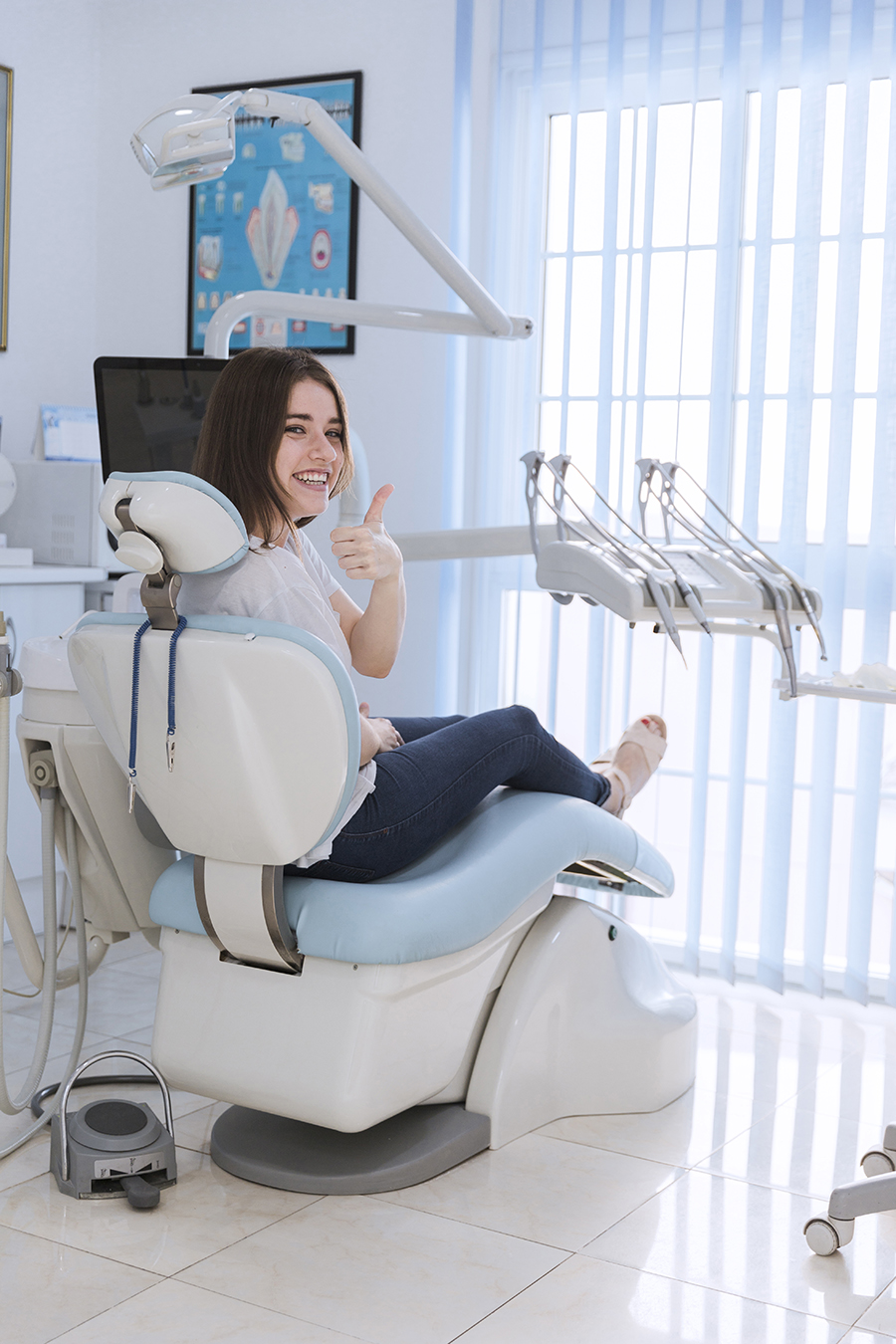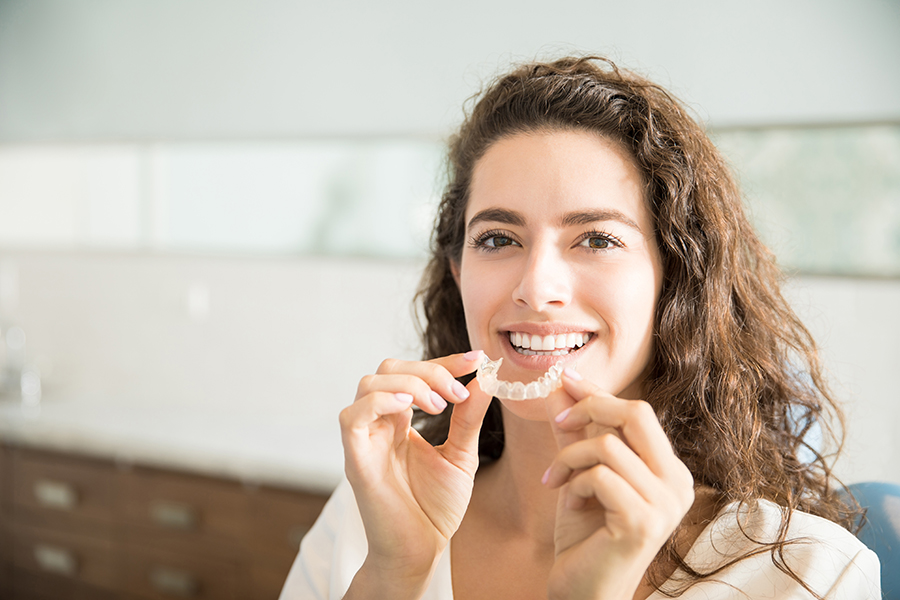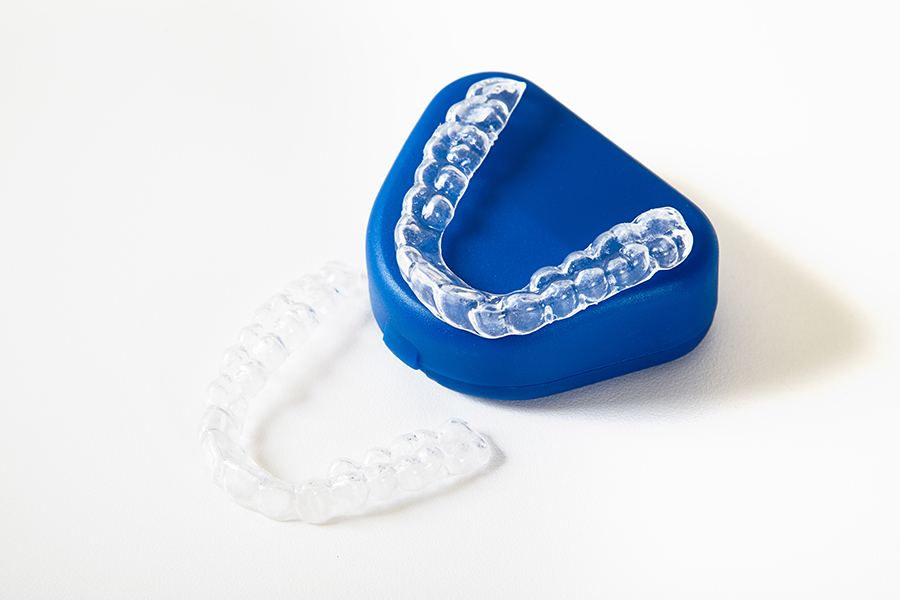Invisalign Turkey: Clear Aligners for a Perfect Smile

When you think of correcting various malformations of your teeth, is the first thing that comes to mind metal braces and the problems caused by braces? If so, you should see Invisalign now! Invisalign is a creative approach to teeth alignment therapy that uses transparent aligners that combine aesthetics, comfort, and practicality. Originally intended to replace traditional orthodontic treatments, this system is both scientifically grounded and easily adapts to your daily life. What is Invisalign, how does it work, and who is it suitable for? And answers to other questions...

What is Invisalign?
It is an orthodontic treatment consisting of clear, removable, and custom-made aligners specially designed to straighten teeth. Unlike traditional metal braces, Invisalign aligners are virtually undetectable and gradually shift your teeth into their optimum position. These aligners are tailored to the current condition of your teeth and the preferred outcome. You will move to a new set of aligners every two weeks throughout treatment; this process results in the correct alignment of your teeth.
The most notable benefit of Invisalign is that it offers an aesthetic correction. Especially popular with adults, this aligner can align your teeth without metal brackets or wires. The aligners are also removable, which allows you to eat, brush your teeth, or go to a special event without restriction.
Apart from being an aesthetic breakthrough, Invisalign is a mix of cutting-edge technology and orthodontic knowledge. A digital model of your teeth starts the treatment process. Using 3D scanning technology, your orthodontist examines your teeth and, depending on this information, decides their present condition and desired position. A set of clear aligners is then created and produced; each one will straighten your teeth with millimetric motion.

Invisalign is a clear aligner system used to treat various orthodontic issues. However, it may not be suitable for all dental problems. So, when is Invisalign needed? The most common cases where it can be effective:
Crowded teeth
- Used when teeth overlap due to lack of space in the jaw.
- Effective for mild to moderate crowding.
- Severe cases may require tooth extraction or traditional braces.
Gaps between teeth (Spacing)
- Can close unwanted gaps, especially in the front teeth (diastema).
- Helps achieve a more uniform smile.
Open bite
- Corrects cases where upper and lower teeth don’t touch when biting (common in front teeth).
- Often caused by thumb-sucking or tongue thrusting.
Deep bite
- Fixes excessive overlapping of upper teeth over lower teeth.
- If untreated, it can lead to gum irritation and tooth wear.
Crossbite
- Corrects misalignment where upper teeth sit inside lower teeth when biting.
- Can cause jaw pain and uneven tooth wear over time.
Overjet (Protruding front teeth)
- Reduces excessive forward positioning of upper front teeth.
- Helps prevent trauma to front teeth and improves lip closure.
Post-Braces retention:
- Clear aligners can be used as retainers to prevent teeth from shifting back.
- Invisalign’s Vivera retainers are a popular choice for long-term stability.
If you want to start Invisalign treatment, here's how the procedure works:
During the initial consultation, you will see an orthodontist to assess the condition of your teeth. The orthodontist will decide whether Invisalign is suitable for you.
Your teeth will be digitally scanned by the orthodontist. To begin treatment, your teeth are scanned in 3D. Computer-aided design software (CAD) processes this scan and creates a personalized treatment plan. Your orthodontist creates a simulation showing how your teeth will shift. At this point you will know how long the treatment will take and how much it will cost. This plan shows how your teeth will shift at each stage.
The adjusters apply constant, gentle pressure to the teeth. You receive the first set, and the creation of your customized adjusters begins.
You wear the adjusters for 20 to 22 hours each day and change to a new set every two weeks. On average, an orthodontist visits you every four to eight weeks to monitor your progress.
The periodontal ligaments and alveolar bone surrounding the teeth are reshaped by this pressure. This is called ‘bone remodeling’ and allows your teeth to adapt to their new position. This method transforms Invisalign from a fashion statement into a true revolution in dental technology.
Each aligner moves your teeth by approximately 0.25-0.5 mm. The aligners are replaced every two weeks, a process that allows your teeth to be fully aligned.
Result: Your smile is protected by retainers starting when your teeth are in line.
Compared to other orthodontic techniques, Invisalign offers many benefits. The main factors that make this approach attractive are the following:
Aesthetic Appearance:
Clear aligners hide your dental treatment. Most people won't even see your aligners on you!
Invisalign aligners are smooth and have no sharp edges, unlike the brackets and wires of metal braces that can irritate the mouth. This means very little discomfort when wearing them.
Hygiene:
Removing service aligners allows you to brush and floss your teeth as usual, so you maintain your oral hygiene. With conventional braces, this procedure is much more cumbersome.
You can remove the aligners at a special event while drinking or eating. For example, you won't have to deal with metal braces when you're being photographed at a wedding!
Problems such as broken brackets or sinking wires are common with metal braces, but with Invisalign, such problems are almost never experienced.
The growing appeal of Invisalign is accompanied by some misinformation. Let's identify these misconceptions and facts:
Myth: 'Invisalign is only suitable for simple cases. Reality: Invisalign works well for both slightly crowded teeth and moderately complex cases. For example, Invisalign can correct some bite issues, mild crowding, and tooth spacing. On the other hand, traditional braces may be more appropriate for extremely complex cases or very serious jaw disease.
Misconception: Therapy takes longer. Reality: Usually between 6 months and 24 months, the length of treatment varies according to your dental condition. Sometimes, Invisalign works faster than metal braces.
Myth: "Removing braces is freedom; no discipline is required." You should wear the braces for twenty to twenty-two hours a day. Your regular use of the braces determines how successful the treatment will be. While it provides freedom, this freedom comes with obligations.
Invisalign attracts people of all ages and circumstances.
For adults with aesthetic issues, it is perfect. For those who want a clear solution rather than metal braces in social settings or corporate life, it is ideal. Invisalign Teen is specifically made for teenagers. The aligners let parents check the treatment's progress with alignment markers.
Invisalign for kids Designed for kids 6 to 10 years old, Invisalign First is meant for early orthodontic treatment. Age Restriction: Invisalign has no age restriction if you have good teeth and gums.
In some situations, though, Invisalign could not be appropriate. Severe jaw misalignments or extremely complicated tooth placements, for instance, might call for conventional orthodontic techniques.
Invisalign, like any other treatment, may have certain side effects. Here are the most typical ones and how to control them:
- Wearing a new aligner may cause minor pain or pressure for a few days. This is typical and shows the movement of the teeth. Cold compresses or painkillers might help.
- As the aligners acclimatise to your tongue, you may notice a little lisp in the first few days. Over time, with practice, this circumstance will get better.
- Your mouth may create more saliva as it changes to the aligners. This is also transitory.
- Allergic Reaction: Occasionally, sensitivity to the aligner material could arise. In such a situation, speak with your orthodontist.Usually, these negative effects are mild and transient.
- The discomfort lessens and the aligners start to be a part of your life as the therapy advances.
We have prepared a table with the differences between Invisalign and lingual braces for you.
| Features | Invisalign | Lingual Braces |
|---|---|---|
| Treatment method, pain and discomfort | They are transparent, removable plaques and may be inadequate in complicated cases. Invisaligns are usually less painful; there may be a slight feeling of pressure. | Braces placed behind the teeth may require more complex and precise adjustments, which can lengthen the treatment process. Initially, there may be more pain and discomfort because the brackets put pressure on your tongue. |
| Aesthetics, comfort and social impact | Completely invisible, hardly noticeable from the outside. More comfortable; eating and brushing are easy because it is removable. There is usually no major effect on the language, but there may be an adjustment period. It is advantageous in social interaction and increases self-confidence because it is invisible. | It is invisible, but because it is behind the tongue, it can be uncomfortable at the beginning and requires a period of acclimatisation. It has a greater effect on the tongue and can make speech temporarily difficult. Advantageous in social interaction; not recognisable from the outside because it is invisible. |
| Duration of treatment | It can usually be faster, but in complicated cases it can take a long time. | It can often take longer because it is necessary to control the movement of the teeth more precisely. |
| Price | It can often be expensive. | It can often be more expensive because the custom design and placement are more complex. |
| Wearability and cleanliness | Removable; can be removed and cleaned while eating or brushing teeth. | It cannot be removed; it is permanently attached, which can create difficulties in terms of comfort. Brushing and flossing is more difficult because it is located on the back surface of the teeth. |
The average costs of Invisalign treatment vary depending on the country, location of the clinic, and quality of the material used.
The average costs of Invisalign treatment are approximately as follows by country:
| Country | Average Invisalign Cost (Euro) |
|---|---|
| United Kingdom (UK) | €3,500 - €5,500 |
| United States (USA) | €4,000 - €7,000 |
| Turkey | €1,200 - €2,500 |

Does Invisalign hurt?
When changing to new aligners, you may feel slight pressure, but this isn't actual pain. You'll adapt within 2-3 days. Compared to traditional braces, Invisalign is significantly more comfortable.
How to clean Invisalign aligners?
- Use special cleaning tablets or brush with mild soapy water
- Always use cold water (hot water can warp the aligners)
- Gently clean with a soft toothbrush
Can I eat with Invisalign in?
No. Remove aligners when eating or drinking hot beverages. You may only drink water while wearing them.
Will teeth shift back after Invisalign treatment?
Yes, without retainers your teeth may gradually move back. Always wear your retainers as prescribed by your orthodontist after treatment.
Invisalign vs. traditional braces?
- For aesthetics: Invisalign
- For faster results: Metal/Ceramic Braces
- For comfort: Invisalign
Do aligners affect speech?
You may experience slight lisping for the first 2-3 days, but speech returns completely to normal once your tongue adjusts. Most patients adapt quickly.
Can I whiten teeth during Invisalign treatment?
Yes. You can do it.
- Aligners work perfectly as whitening trays
- "Home bleaching" can be done under orthodontist supervision
- You'll achieve both straighter and whiter teeth
What if my aligners crack/break?
- Contact your orthodontist immediately
- Temporarily use your previous set of aligners
- Never attempt DIY repairs with adhesives
- New aligners can typically be ready in 3-5 days
Can I wear piercings during treatment?
- Tongue piercings: Not recommended (can damage aligners)
- Lip piercings: Use with caution
- Best to avoid piercings until treatment completes
- Metal jewelry may scratch aligners
Do aligners cause bad breath?
Poorly maintained aligners can harbor bacteria. Prevent this by:
- Brushing aligners after meals
- Flossing regularly
- Using cleaning tablets
- Staying hydrated
Can Invisalign fix major jaw problems?
While it has limitations for severe malocclusions or open bites, Invisalign can be quite successful for mild to moderate jaw problems. Your orthodontist will evaluate the conditions and recommend the best course of action.
How long does treatment take?
Treatment usually lasts from six to twenty-four months. Complex cases may take longer, while simple cases can be completed in six to 12 months.
How often should I change my aligners?
Typically, each set of aligners lasts two weeks. However, your orthodontist may recommend a one-week adjustment in certain circumstances.

